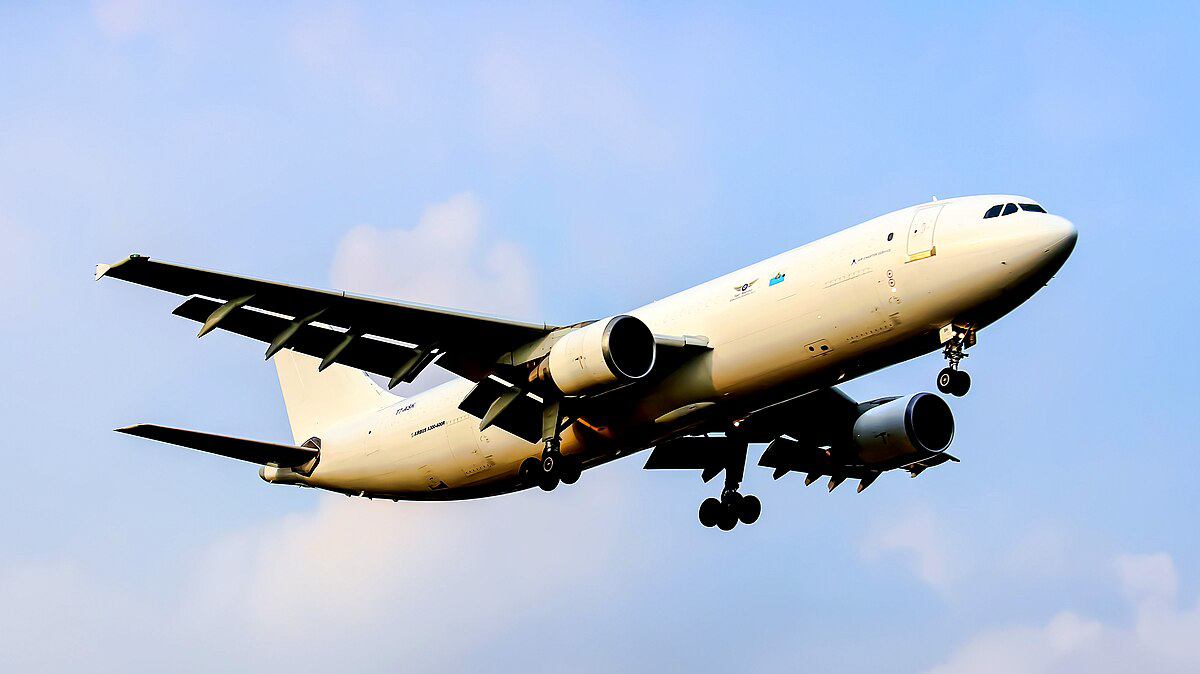Introduction
On 2 July 2024, a San Marino Aviation Airbus A330-300, registration T7-MMM, operating on behalf of Garuda Indonesia, experienced an in-flight engine failure while conducting a positioning flight from Surakarta, Indonesia, to Madinah, Saudi Arabia (GA6239).
The aircraft, carrying 14 crew members but no passengers, was cruising at FL340 (34,000 feet) approximately 180 nautical miles northwest of Surakarta when the left-hand Rolls-Royce Trent 772 engine suffered a critical failure, leading the crew to initiate an immediate return.
Upon landing at Surakarta’s runway 26, the aircraft came to a stop on the runway while emergency services responded to smoke and flames from the left engine. The crew conducted an emergency evacuation, resulting in one flight attendant sustaining injuries.
The German BFU (Federal Bureau of Aircraft Accident Investigation) later confirmed their involvement, as the Trent 772 engine is a German-designed powerplant, and indicated that the engine displayed increased vibrations and multiple warnings before failure.
Flight & Accident Overview
• Aircraft: Airbus A330-300
• Operator: San Marino Aviation (on behalf of Garuda Indonesia)
• Flight Number: GA6239
• Route: Surakarta (SOC) → Madinah (MED)
• Date: 2 July 2024
• Occupants: 14 crew (no passengers)
• Casualties: 1 crew member injured during evacuation
• Aircraft Damage: Suspected fire damage to left-hand engine
• Investigation: Supported by Germany’s BFU
Sequence of Events
Departure & Cruise Phase
• The aircraft departed Surakarta without passengers, after previously transporting Hajj pilgrims back to Indonesia.
• The flight progressed normally until reaching FL340, approximately 180 nautical miles northwest of Surakarta.
Engine Failure & Return to Surakarta
• The left-hand Rolls-Royce Trent 772 engine experienced increased vibrations, prompting multiple warnings in the cockpit.
• The crew shut down the affected engine and declared an emergency.
• The aircraft drifted down to FL100 (10,000 feet) while returning to Surakarta.
• Emergency services were alerted in preparation for the aircraft’s arrival.
Landing & Evacuation
• The aircraft landed safely on runway 26 at Surakarta, approximately 80 minutes after departure.
• While the aircraft was stopped on the runway, smoke and flames were observed coming from the left engine.
• The crew initiated an emergency evacuation via slides.
• One flight attendant sustained injuries during the evacuation.
• Emergency crews extinguished the flames and inspected the aircraft for further risks.
Investigation & Initial Findings
Engine Malfunction & Shutdown
• The Trent 772 engine exhibited increased vibration and multiple warnings before failure, suggesting potential mechanical failure or thermal stress.
• The crew’s decision to shut down the engine and divert was in accordance with standard emergency procedures.
Post-Landing Fire & Evacuation
• Smoke and flames were observed from the left engine after the aircraft had landed, suggesting residual fuel ignition or turbine failure.
• Emergency services responded promptly, but the fire necessitated an immediate evacuation.
• The crew followed standard evacuation protocols, but one flight attendant was injured in the process.
Aircraft Status & Investigation Support
• The aircraft remained grounded for repairs and safety checks, returning to service on 25 July 2024.
• The German BFU (Federal Bureau of Aircraft Accident Investigation) confirmed their involvement, as the engine is a German-designed Rolls-Royce Trent 772.
Potential Causes & Contributing Factors
1. Engine Component Failure
• The Trent 772 is known for its reliability, but component wear, oil system malfunctions, or thermal fatigue could have led to a catastrophic failure.
• Increased vibrations before shutdown suggest an issue with rotating components (such as turbine blades, bearings, or the fan section).
2. Residual Fuel Ignition After Shutdown
• The fire observed after landing could indicate fuel pooling in the combustion chamber, leading to post-shutdown ignition.
• Improper cooling or unburned fuel leakage could have contributed to flames appearing after the aircraft came to a stop.
3. Heat-Related Structural Degradation
• If excessive heat buildup occurred before shutdown, critical components may have weakened, leading to smoke and fire post-landing.
Crew & Emergency Response Performance
Pilot Actions
• The crew correctly identified engine failure symptoms and executed an emergency shutdown.
• The decision to return to Surakarta instead of continuing was correct, given the unknown extent of engine damage.
• The diversion and controlled descent were well-executed, ensuring a safe landing.
Evacuation Efficiency
• The emergency evacuation was ordered immediately upon observing smoke and flames.
• One crew member sustained injuries, indicating potential challenges in slide deployment or egress procedures.
• Emergency responders effectively contained the situation, ensuring no further injuries.
Safety Recommendations & Preventative Measures
1. Engine Health Monitoring & Vibration Analysis
• Further analysis is required to determine if early warning signs of failure were present before takeoff.
• Regular engine vibration trend monitoring should be reinforced to detect abnormalities.
2. Post-Shutdown Fire Prevention Measures
• Investigators should assess whether fuel flow to the affected engine was fully cut off after shutdown.
• Fire containment measures for post-landing shutdowns should be reviewed.
3. Crew Training & Evacuation Drills
• Enhanced training for emergency evacuation procedures may reduce injury risks for cabin crew.
• Slide deployment conditions and crew coordination should be reviewed to improve response times.
Conclusion
The engine failure and subsequent emergency landing of San Marino Aviation Flight GA6239 highlight the importance of immediate crew response, engine monitoring, and fire suppression procedures.
Although no passengers were aboard, the incident underscores the risks of in-flight engine malfunctions, potential post-landing fires, and evacuation-related injuries.
The German BFU’s involvement suggests that further technical analysis of the Trent 772 engine’s failure modes is required.
Disclaimer
“This report is based on available information as of 14 March 2025. While every effort has been made to ensure accuracy, the completeness of the details cannot be guaranteed. If you are the rightful owner of any referenced materials and wish them removed, please email takedown@cockpitking.com.”
